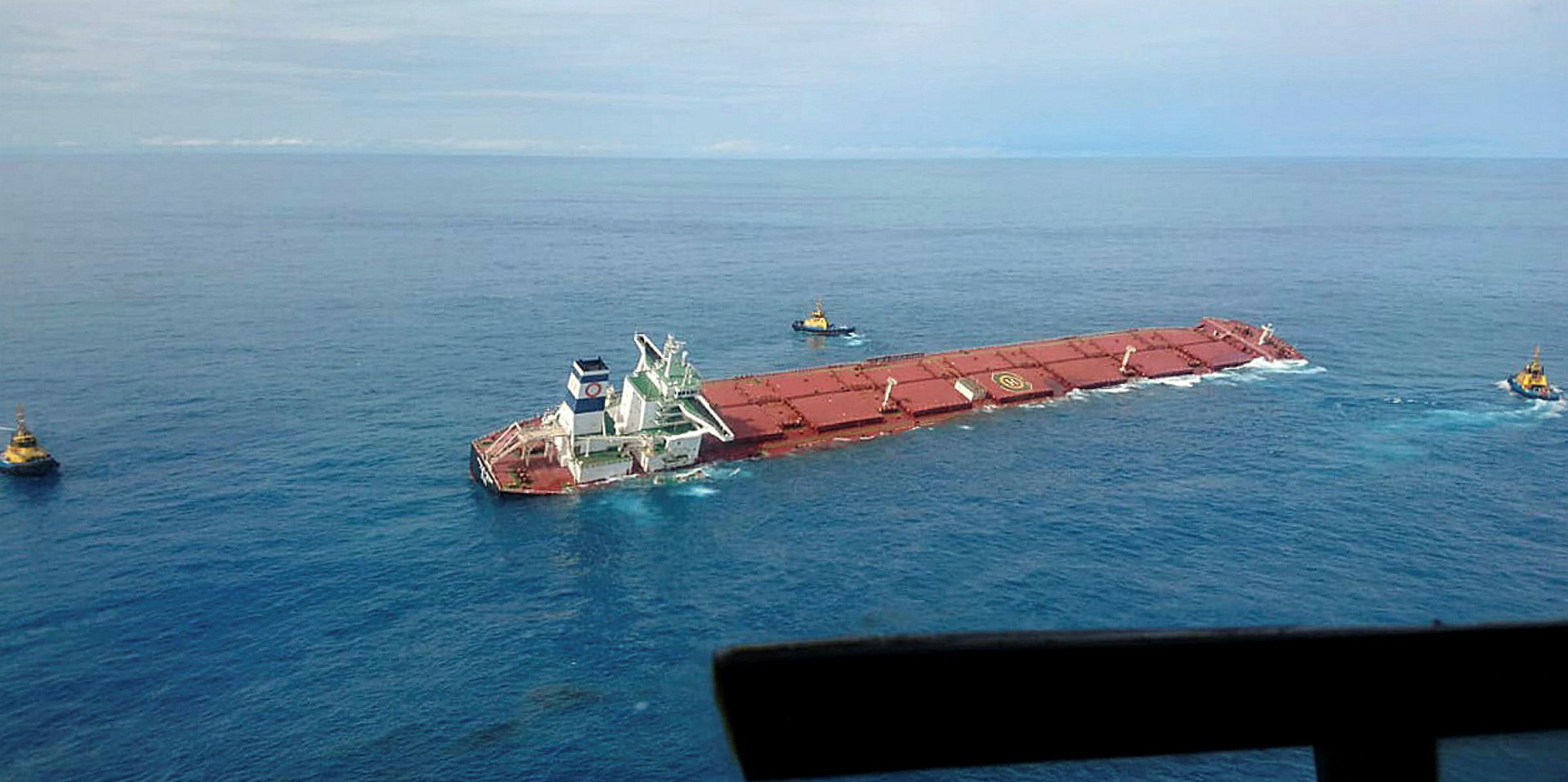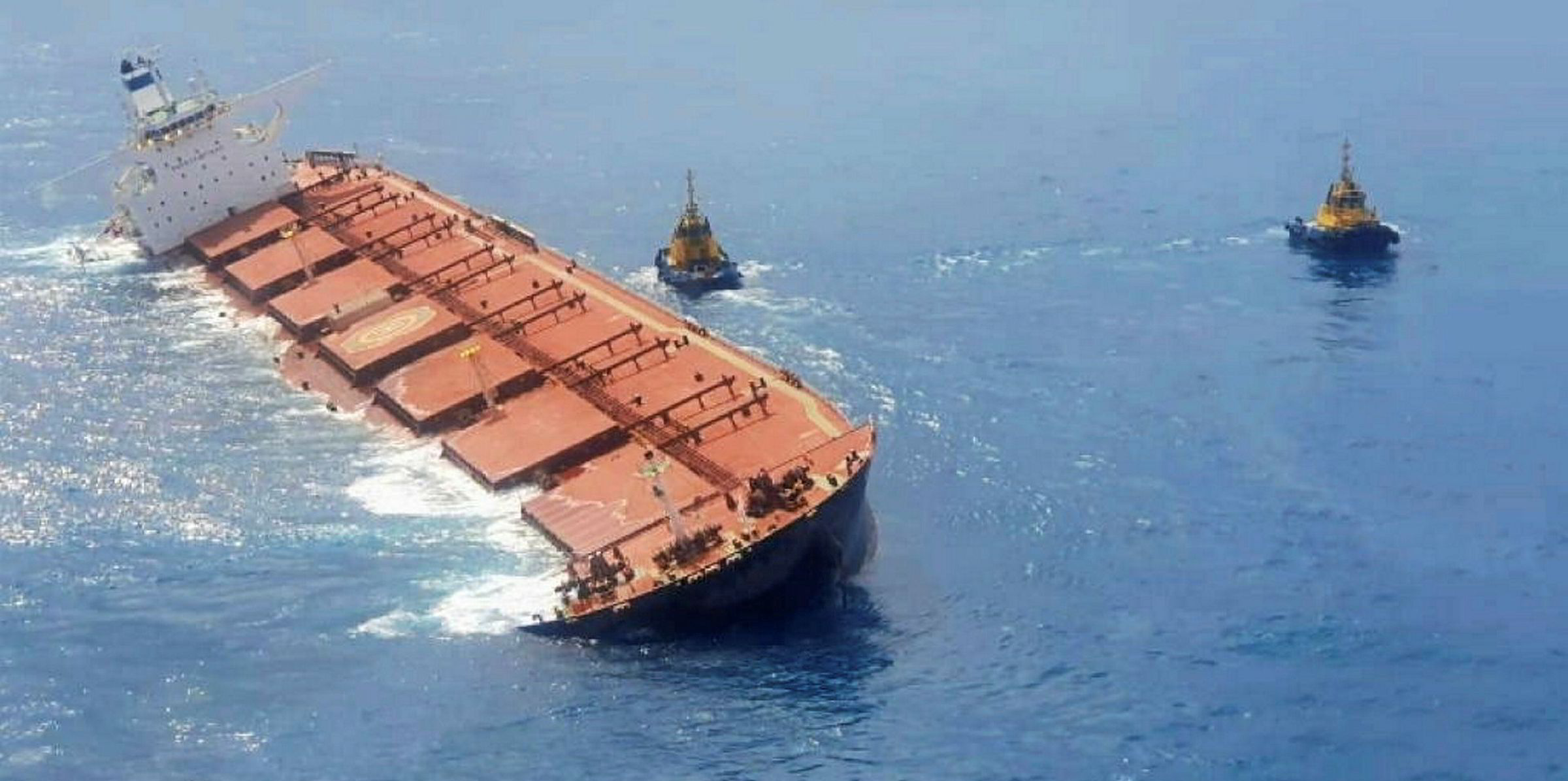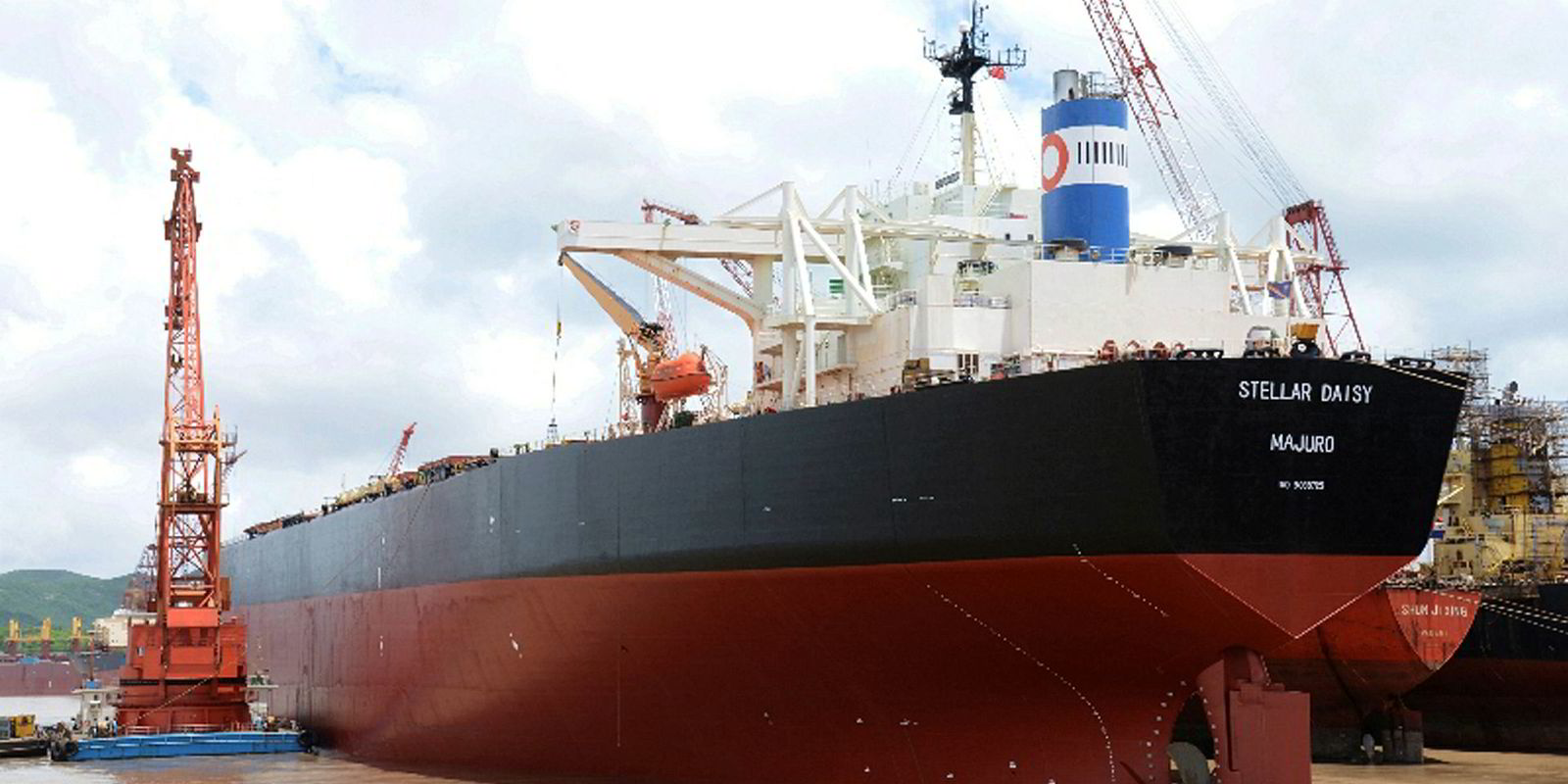The grounding of a giant Polaris Shipping-owned bulker off Brazil has reignited concerns over the structural fragility of modern VLOCs.
The fully laden, 300,000-dwt Stellar Banner (built 2016) was deliberately grounded by the master off Sao Luis after it departed Vale’s Ponta de Madeira terminal. That followed what has been reported as some form structural failure and water ingress in the forward holds.
The initial cause of the incident is now the subject of an ongoing investigation, but it is understood that the leading theory is that the VLOC hit an object in the channel.
A Polaris spokesman said there is "absolutely nothing at this time to suggest that that the cause of this incident was in any way related to structural issues".
"Stellar banner is a modern, 2016-built vessel, operated to the highest standards and fully classified," he said.
Cargo liquefaction, though often a problem in large bulkers, seems less likely in this incident. Liquefaction of iron-ore fines of the type loaded onto the Stellar Banner have been associated with stability problems in bulkers in the past.
In 2012, the 206,000-dwt BW Odel (built 2007) was forced to anchor off Mauritius for several months with excess water in its cargo holds while carrying a Brazilian export cargo to China.
A nickel ore problem
However, dry bulk cargo liquefaction is more commonly associated with nickel ore than iron ore. It also usually develops over several days and the Stellar Banner had only just departed the loading terminal when it ran into problems.
Stress fractures would also seem unlikely as the vessel is only four years old. High speed loading rates at Vale’s Ponta de Madeira terminal have been an issue for some older VLOCs but the Stellar Banner will have been constructed to tolerances able to withstand the rapid loading rates used by Vale’s loading facility, experts said.
Contact damage with terminal wharfs can also cause damage to side shell plating over time leading to water ingress in bulkers. But, it is not a problem usually associated with vessels of the Stellar Banner’s age.
Sources suggested there may have been some initial contact with an object, or possibly navigational error, that caused the damage and consequent water ingress.
What is concerning pundits is that the master immediately grounded the Stellar Banner because VLOC designs are known to be vulnerable to potentially catastrophic progressive flooding of the cargo holds when water ingress is present.
The fragility of large bulk carrier designs to progressive flooding was demonstrated in a Marshall Islands flag-state accident report into the loss of the 266,000-dwt VLOC Stellar Daisy (built 1993).
That ship also transported iron ore from Brazil to China in 2017. The rapid sinking of the vessel, which suffered structural failure after water ingress, claimed 22 of the 24 crew.
Although the Stellar Daisy was a conversion from a VLCC, it is still thought to demonstrate some of the structural weakness of modern VLOC newbuildings. Both the Stellar Daisy and Stellar Banner fly the Marshall Islands flag.
TradeWinds understands that the flag state, together with Intercargo and advised by the International Association of Classification Societies, submitted a paper to the IMO’s upcoming Maritime Safety Committee due to convene in May.
Significant changes sought
The paper calls for significant changes to the design of VLOC newbuildings regarding the size of ballast tanks to improve the survival ratein cases of flooding.
The idea behind the recommendations is for these to be incorporated into the International Convention for the Safety of Life at Sea, which is intended to improve the inherent safety of the vessel design.
The Marshall Islands' own investigation into the Stellar Banner loss may be used to back calls for structural design changes at the IMO.
This story has been amended since publication to reflect that Polaris has said that there are no signs that structural failure is the cause of the incident.






